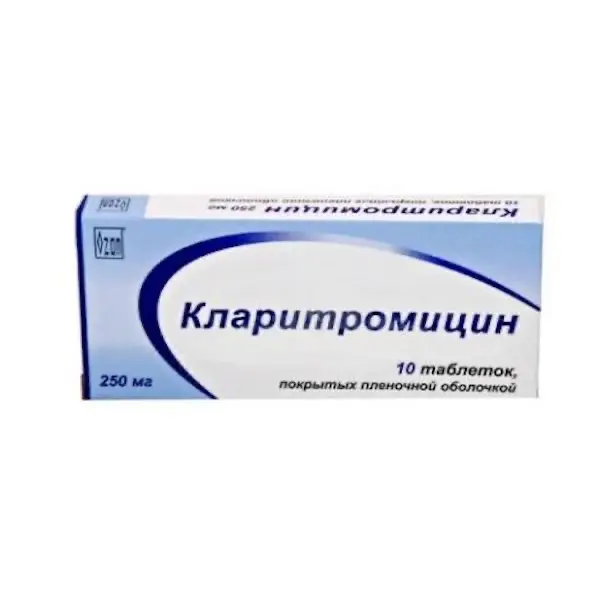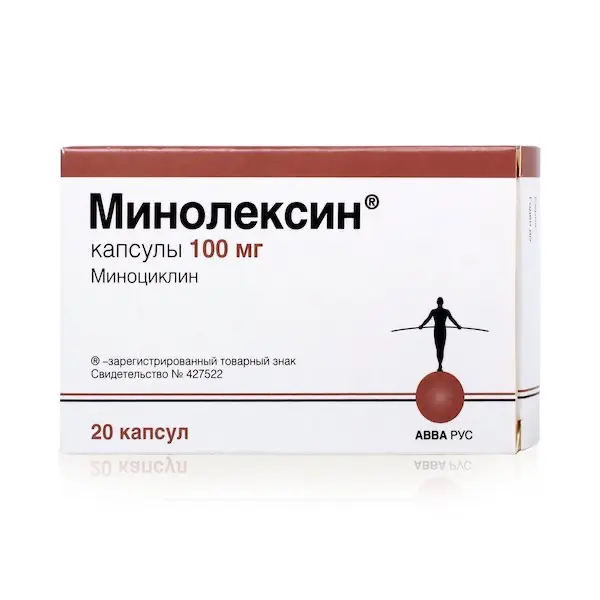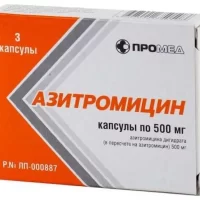Description
Ceftazidime injections Pharmacodynamics
Mechanism of action.
Ceftazidime is a III generation cephalosporin antibiotic. It has a bactericidal effect by disrupting the synthesis of the bacterial cell wall.
The prevalence of acquired bacterial resistance to ceftazidime varies from region to region and over time, in certain species of microorganisms resistance can be very high. It is preferable to have localized sensitivity data, especially for therapy of severe infections.
Bacteria commonly sensitive to ceftazidime are:
Gram-positive aerobes – Staphylococcus aureus (strains sensitive to methicillin)1, coagulazonegative staphylococci (strains sensitive to methicillin), beta-hemolytic streptococci1;
Gram-negative aerobes – Haemophilus influenzae, including ampicillin-resistant strains7, Haemophilus parainfluenzae, Neisseria gonorrhoeae, Neisseria meningitidis’, Pasteurella multocida, Proteus spp.7, Providencia spp, Salmonella spp, Shigella spp.
Bacteria for which acquired resistance to ceftazidime is likely:
Gram-negative aerobes – Acinetobacter spp., Burkholderia cepacia, Citrobacter spp.7, Enterobacter spp.7, Escherichia coli1, Klebsiella spp. including K. pneumoniae1, Pseudomonas spp. including P. aeruginosa1, Serratia spp.7, Morganella morganii, Yersinia enterocoliticcp
Gram-positive aerobes – Streptococcus pneumoniae’. Streptococci Viridans group; Gram-positive anaerobes – Clostridium spp. except C. difficile, Peptostreptococcus spp., Propionibacterium spp;
Gram-negative anaerobes – Fusobacterium spp.
Bacteria with natural resistance to ceftazidime:
Gram-positive aerobes – Enterococcus spp. including E. faecalis and E. faecium, Listeria spp;
Gram-negative aerobes – Campylobacter spp.; Gram-positive anaerobes – Clostridium difficile; Gram-negative anaerobes – Bad ides spp. including B.fragilis; others – Chlamydia spp., Mycoplasma spp., Legionella spp.
1 – For these bacteria, the clinical efficacy of ceftazidime has been demonstrated in clinical trials.
Indications
Monoinfections or mixed infections caused by microorganisms sensitive to ceftazidime:
– Severe infections such as septicemia, bacteremia, infections in immunodeficient patients;
– bacterial meningitis;
– febrile neutropenia due to bacterial infection;
– nosocomial pneumonia;
– bronchopulmonary bacterial infection in cystic fibrosis;
– Infections of ENT organs, including chronic purulent otitis media, malignant external otitis media;
– complicated urinary tract infections;
– complicated infections of the skin and soft tissues;
– gastrointestinal infections, biliary tract;
– complicated intra-abdominal infections;
– bone and joint infections;
– peritonitis associated with hemo- and peritoneal dialysis and with continuous ambulatory peritoneal dialysis;
– prevention of infectious complications during operations on the prostate (transurethral resection).
Ceftazidime may be prescribed as the drug of choice until bacteriological sensitivity results are available. Ceftazidime can also be used in combination with most other beta-lactam antibiotics as well as with aminoglycosides.
The sensitivity of bacteria to ceftazidime varies by region and over time. Where possible, local sensitivity data should be taken into account (see section “Pharmacological properties”).
Contraindications
Hypersensitivity to ceftazidime or any other component of the drug, other cephalosporin antibiotics in history; severe hypersensitivity reactions (e.g., anaphylactic reactions) to other beta-lactam antibacterials in history.
Caution. In patients with impaired renal function, history of ulcerative colitis, during infancy, concomitant use with “loop” diuretics and aminoglycosides.
Use in pregnancy and during breast-feeding. There are no data confirming embryotoxic or teratogenic effects of ceftazidime, but the drug should be used with caution in the first months of pregnancy. If it is necessary to use ceftazidime during pregnancy, the expected benefit to the mother should be weighed against the potential risk to the fetus. Ceftazidime is excreted with breast milk in small amounts, therefore caution should be exercised when using the drug by breast-feeding women. In case of adverse effects in breastfed children, breastfeeding should be stopped for the period of ceftazidime use.
Dosage and administration method
- Intravenous (IV) or intramuscular (IM). Dosage of Ceftazidime injections is adjusted individually depending on the severity of the disease, localization, type of the causative agent and its sensitivity to ceftazidime, as well as the patient’s age and state of renal function.
- Adults and children with a body weight of 40 kg or more: 1-6 g/day in 2 or 3 infusions v/v or v/m. In bronchopulmonary bacterial infection in patients with cystic fibrosis: 100-150 mg/kg/day, divided into 3 injections (maximum daily dose is 9 g)1. In febrile neutropenia due to bacterial infection, nosocomial pneumonia, bacterial meningitis, bacteremia – 2 g every 8 hours.
- In infections of bones and joints, complicated skin and soft tissue infections, ENT-organ infections, complicated intra-abdominal infections, peritonitis associated with hemo- and peritoneal dialysis and with continuous ambulatory peritoneal dialysis – 1-2 g every 8 hours.
- In infections of the gastrointestinal tract and biliary tract – 1 g every 8 hours or 2 g every 12 hours.
- In severe infections, especially in immunocompromised patients (including patients with herpes simplex) – 2 g every 8 or 12 hours, or 3 g every 12 hours.
- In complicated urinary tract infections it is recommended to administer 1-2 g every 8 or 12 hours.
- With the purpose of prophylaxis during operations on the prostate (transurethral resection), Ceftazidime injections are administered – in a dose of 1 g during introductory anesthesia; the second dose is administered during catheter removal.
- Extended infusion regimen. In febrile neutropenia due to bacterial infection, bronchopulmonary bacterial infection in cystic fibrosis, nosocomial pneumonia, bacterial meningitis, bacteremia, bone and joint infections, complicated skin and soft tissue infections, complicated intra-abdominal infections peritonitis associated with haemo- and peritoneal dialysis and with continuous ambulatory peritoneal dialysis Ceftazidime is administered as a loading dose of 2 g followed by extended infusion doses of 4 to 6 g every 24 hours.1
- 1 – No adverse effects were observed in adult patients with normal nocicular function when the drug was administered in a dose of up to 9 g per day.
- Children over 2 months of age with a body weight of less than 40 kg.
- In infections of the gastrointestinal tract and biliary tract 30-100 mg/kg/day in 2 or 3 injections.
- In infections of ENT organs (chronic purulent media otitis, malignant external otitis), complicated bone and joint infections, complicated skin and soft tissue infections, complicated intra-abdominal infections, peritonitis associated with hemo- and peritoneal dialysis and with continuous ambulatory peritoneal dialysis – 100-150 mg/kg/day in three injections, maximum dose – 6 g/day.
- In febrile neutropenia, bronchopulmonary bacterial infection in cystic fibrosis, bacterial meningitis, severe infections such as septicemia, bacteremia, infections in immunodeficient patients – 150 mg/kg/day in three infusions, maximum dose – 6 g/day.
- Mode of prolonged infusion. In febrile neutropenia due to bacterial infection, bronchopulmonary bacterial infection in cystic fibrosis, nosocomial pneumonia, bacterial meningitis, bacteremia, bone and joint infections, complicated skin and soft tissue infections, complicated intra-abdominal infections, peritonitis associated with hemo- and peritoneal dialysis and with continuous ambulatory peritoneal dialysis Ceftazidime is administered as a loading dose of 60-100 mg/kg with subsequent administration of the drug as an extended infusion at a dose of 100-200 mg/kg/day, the maximum dose being 6 g/day.
- Newborn infants aged 0-28 days and children aged 28 days to 2 months:
- 25-60 mg/kg/day in 2 injections.
- Safety and efficacy of Ceftazidime injections in extended infusion mode in neonates from 0 to 28 days and children from 28 days to 2 months have not been studied.
- In elderly patients, the recommended dose of Ceftazidime injections should not exceed 3 g/day, especially in patients over 80 years of age.
- In patients with impaired nocicular function it is recommended to reduce the dose of ceftazidime. The initial dose is 1 g for adults and children with body weight 40 kg or more or 25 mg/kg for children with body weight less than 40 kg. Maintenance doses, which are adjusted according to creatinine clearance values, are given in the tables below.
- Adults and children with a body weight of 40 kg or more
- Creatinine clearance (mL/min) Creatinine plasma concentration, μmol/L (mg/dL) Recommended single dose of ceftazidime (g) Frequency of administration
- >50 < 150 (< 1.7) standard doses
- 50 to 31 150 to 200 (1.7 to 2.3) 1.0 every 12 hours
- 30 to 16 200 to 350 (2.3 to 4.0) 1.0 every 24 hours
- 15 to 6 350 to 500 (4.0 to 5.6) 0.5 every 24 hours
- <5 > 500 (>5.6) 0.5 every 48 hours





